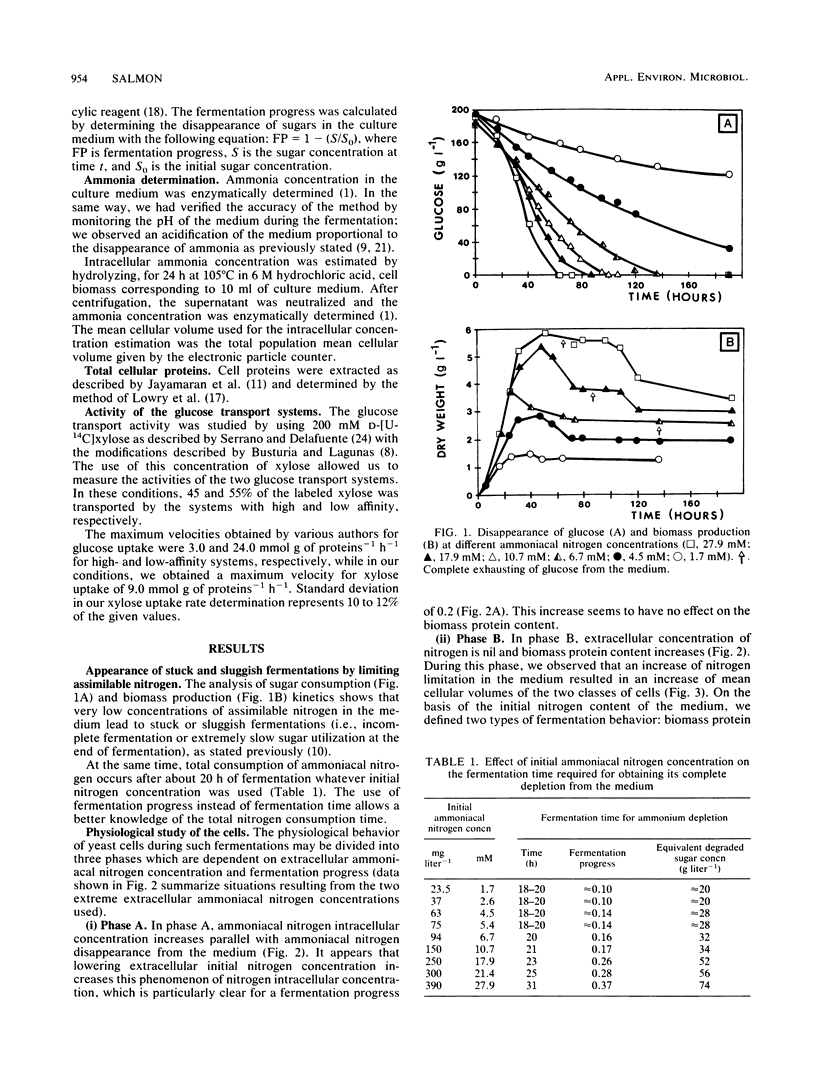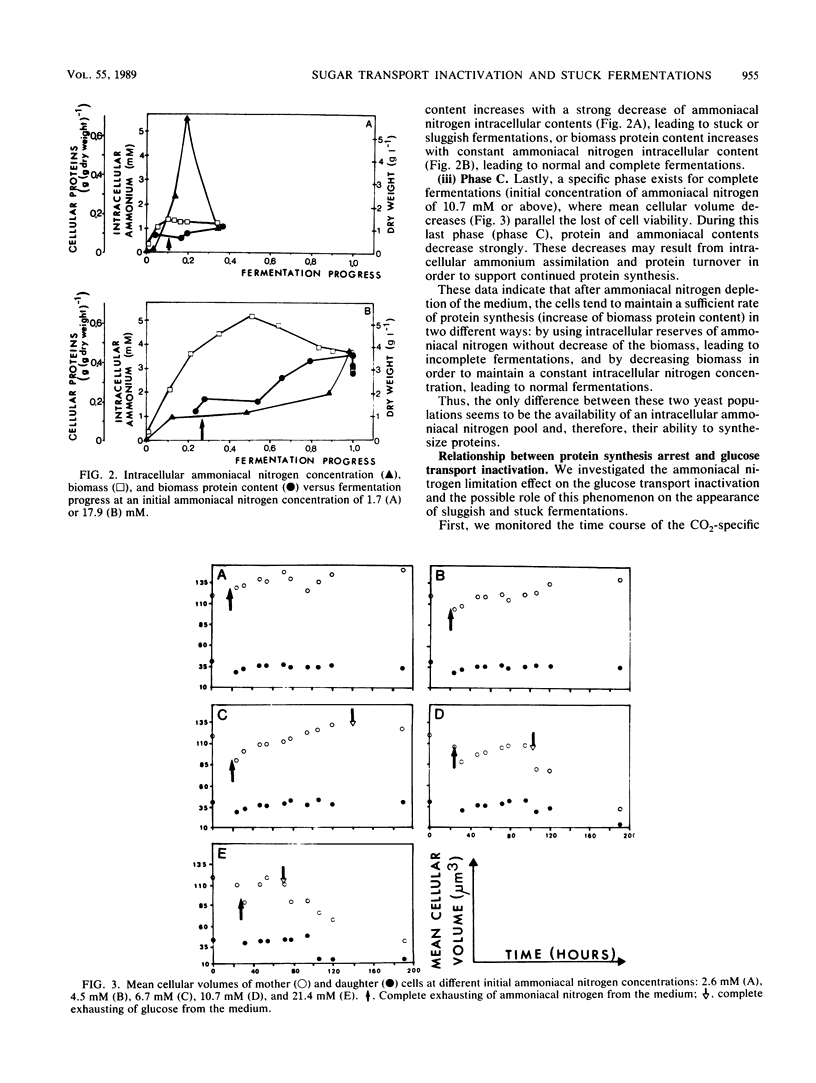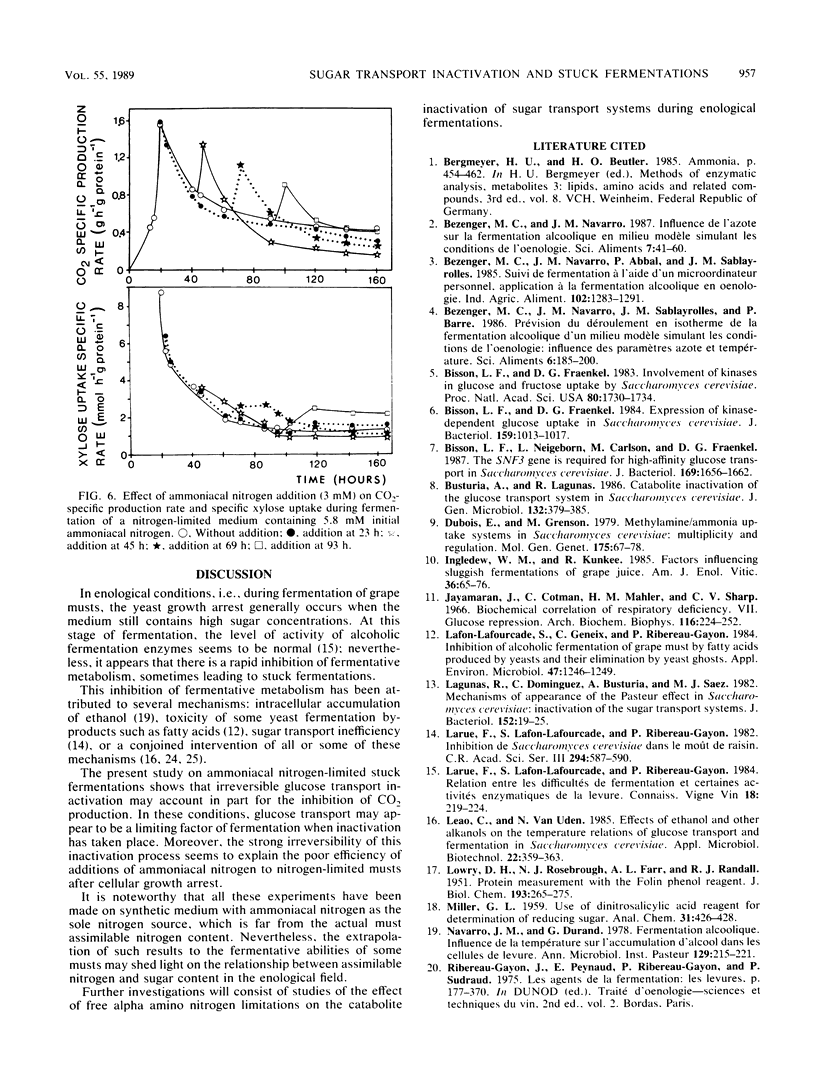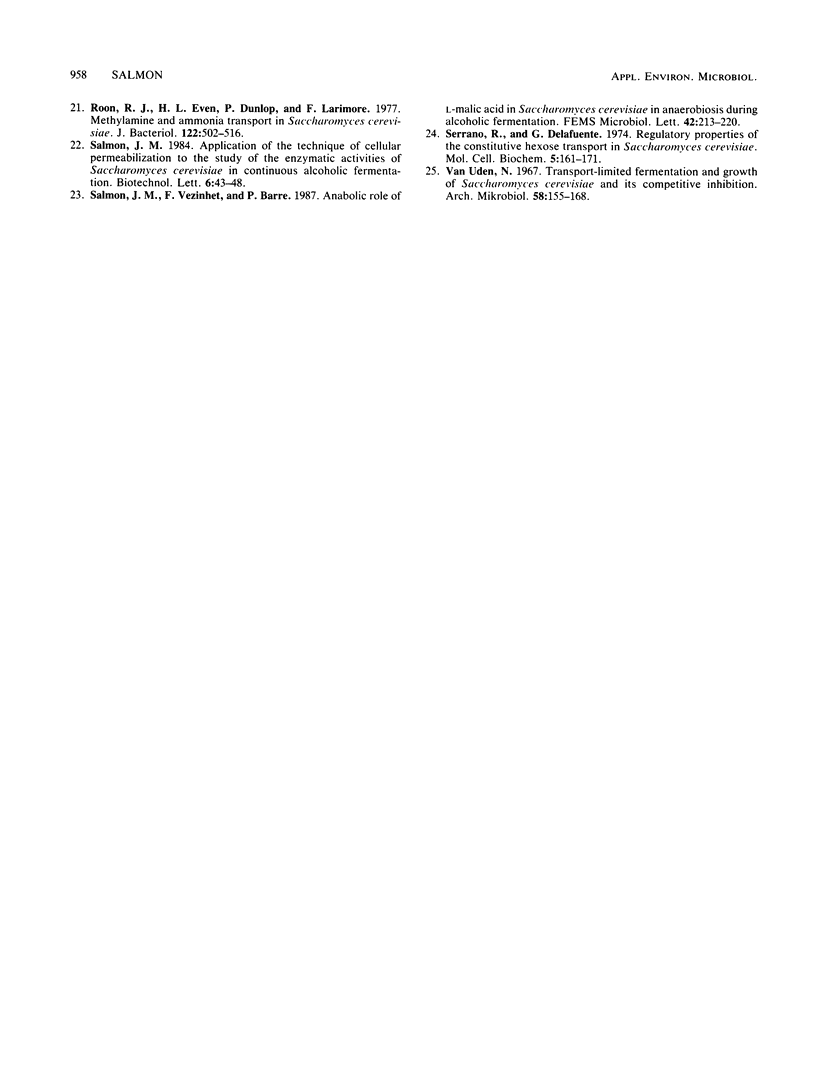Abstract
Sluggish and stuck (i.e., very delayed or incomplete) fermentations have been often observed in wine making. Some of them appeared to be associated with insufficient levels of yeast nutrients such as assimilable nitrogen. In these conditions, sugar transport catabolite inactivation, which is triggered by the protein synthesis arrest, may account in part for the inhibition of fermentation. Moreover, this mechanism of inhibition may explain the failure of added ammoniacal nitrogen to nitrogen-limited musts to restore or elevate rate of fermentation after the early yeast growth phase.
Full text
PDF





Selected References
These references are in PubMed. This may not be the complete list of references from this article.
- Bisson L. F., Fraenkel D. G. Expression of kinase-dependent glucose uptake in Saccharomyces cerevisiae. J Bacteriol. 1984 Sep;159(3):1013–1017. doi: 10.1128/jb.159.3.1013-1017.1984. [DOI] [PMC free article] [PubMed] [Google Scholar]
- Bisson L. F., Fraenkel D. G. Involvement of kinases in glucose and fructose uptake by Saccharomyces cerevisiae. Proc Natl Acad Sci U S A. 1983 Mar;80(6):1730–1734. doi: 10.1073/pnas.80.6.1730. [DOI] [PMC free article] [PubMed] [Google Scholar]
- Bisson L. F., Neigeborn L., Carlson M., Fraenkel D. G. The SNF3 gene is required for high-affinity glucose transport in Saccharomyces cerevisiae. J Bacteriol. 1987 Apr;169(4):1656–1662. doi: 10.1128/jb.169.4.1656-1662.1987. [DOI] [PMC free article] [PubMed] [Google Scholar]
- Busturia A., Lagunas R. Catabolite inactivation of the glucose transport system in Saccharomyces cerevisiae. J Gen Microbiol. 1986 Feb;132(2):379–385. doi: 10.1099/00221287-132-2-379. [DOI] [PubMed] [Google Scholar]
- Dubois E., Grenson M. Methylamine/ammonia uptake systems in saocharomyces cerevisiae: multiplicity and regulation. Mol Gen Genet. 1979 Aug;175(1):67–76. doi: 10.1007/BF00267857. [DOI] [PubMed] [Google Scholar]
- Jayaraman J., Cotman C., Mahler H. R., Sharp C. W. Biochemical correlates of respiratory deficiency. VII. Glucose repression. Arch Biochem Biophys. 1966 Sep 26;116(1):224–251. doi: 10.1016/0003-9861(66)90029-4. [DOI] [PubMed] [Google Scholar]
- LOWRY O. H., ROSEBROUGH N. J., FARR A. L., RANDALL R. J. Protein measurement with the Folin phenol reagent. J Biol Chem. 1951 Nov;193(1):265–275. [PubMed] [Google Scholar]
- Lafon-Lafourcade S., Geneix C., Ribéreau-Gayon P. Inhibition of alcoholic fermentation of grape must by Fatty acids produced by yeasts and their elimination by yeast ghosts. Appl Environ Microbiol. 1984 Jun;47(6):1246–1249. doi: 10.1128/aem.47.6.1246-1249.1984. [DOI] [PMC free article] [PubMed] [Google Scholar]
- Lagunas R., Dominguez C., Busturia A., Sáez M. J. Mechanisms of appearance of the Pasteur effect in Saccharomyces cerevisiae: inactivation of sugar transport systems. J Bacteriol. 1982 Oct;152(1):19–25. doi: 10.1128/jb.152.1.19-25.1982. [DOI] [PMC free article] [PubMed] [Google Scholar]
- Navarro J. M., Durand G. Fermentation alcoolique: influence de la température sur l'accumulation d'alcool dans les cellules de levure. Ann Microbiol (Paris) 1978 Aug-Sep;129B(2):215–224. [PubMed] [Google Scholar]
- Roon R. J., Even H. L., Dunlop P., Larimore F. L. Methylamine and ammonia transport in Saccharomyces cerevisiae. J Bacteriol. 1975 May;122(2):502–509. doi: 10.1128/jb.122.2.502-509.1975. [DOI] [PMC free article] [PubMed] [Google Scholar]
- Serrano R., Delafuente G. Regulatory properties of the constitutive hexose transport in Saccharomyces cerevisiae. Mol Cell Biochem. 1974 Dec 20;5(3):161–171. doi: 10.1007/BF01731379. [DOI] [PubMed] [Google Scholar]
- van Uden N. Transport-limited fermentation and growth of saccharomyces cerevisiae and its competitive inhibition. Arch Mikrobiol. 1967;58(2):155–168. doi: 10.1007/BF00406676. [DOI] [PubMed] [Google Scholar]


